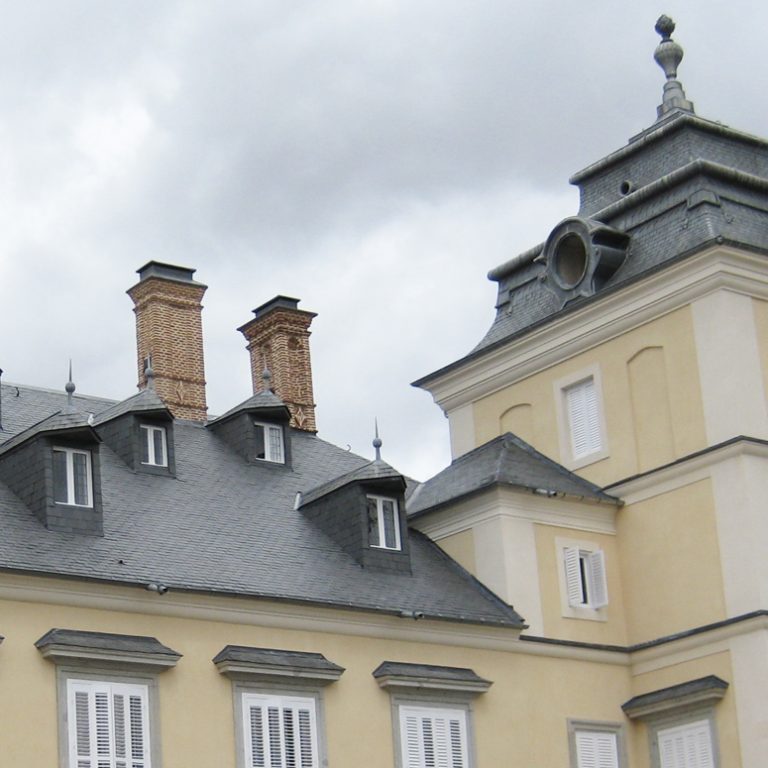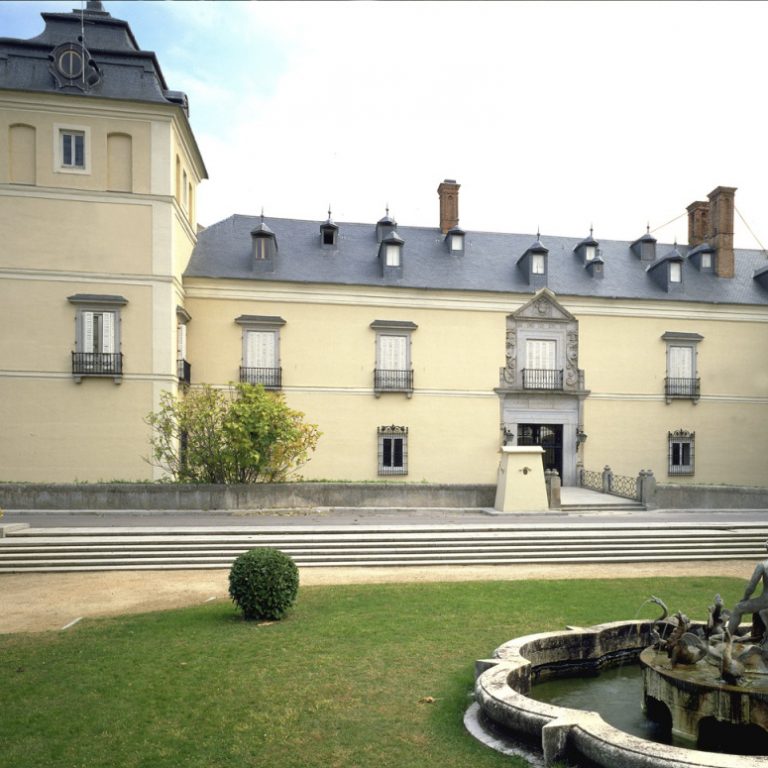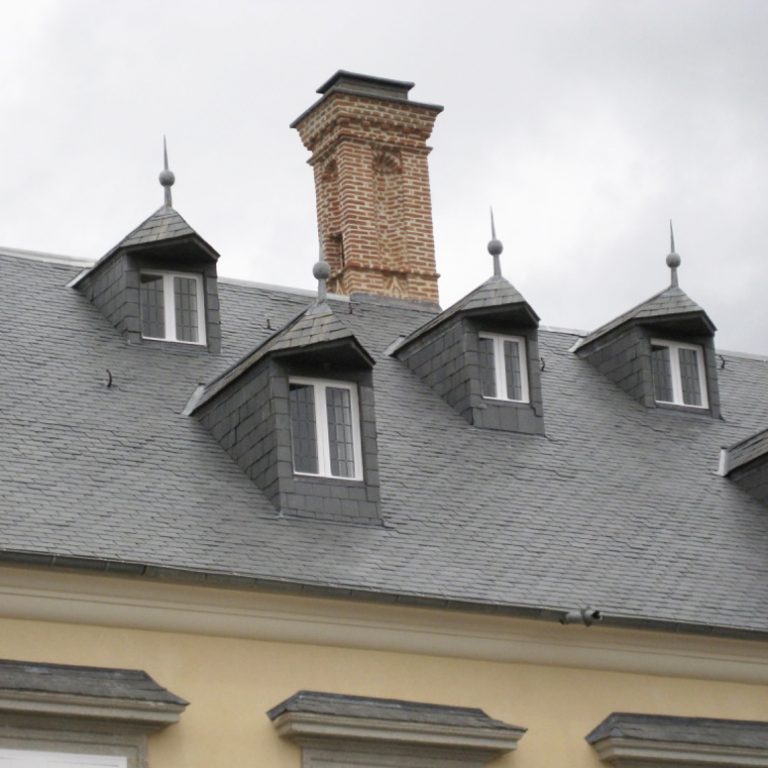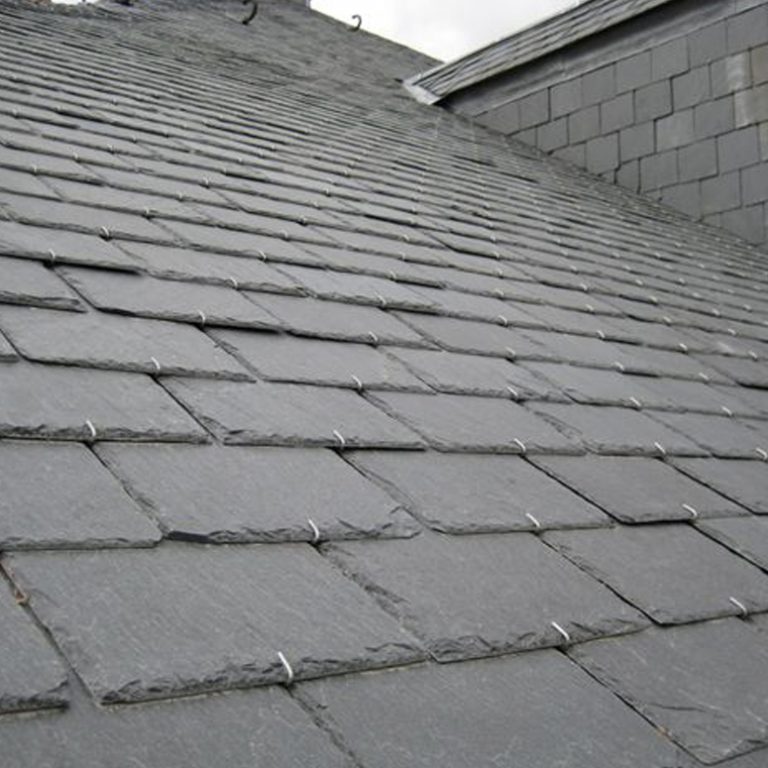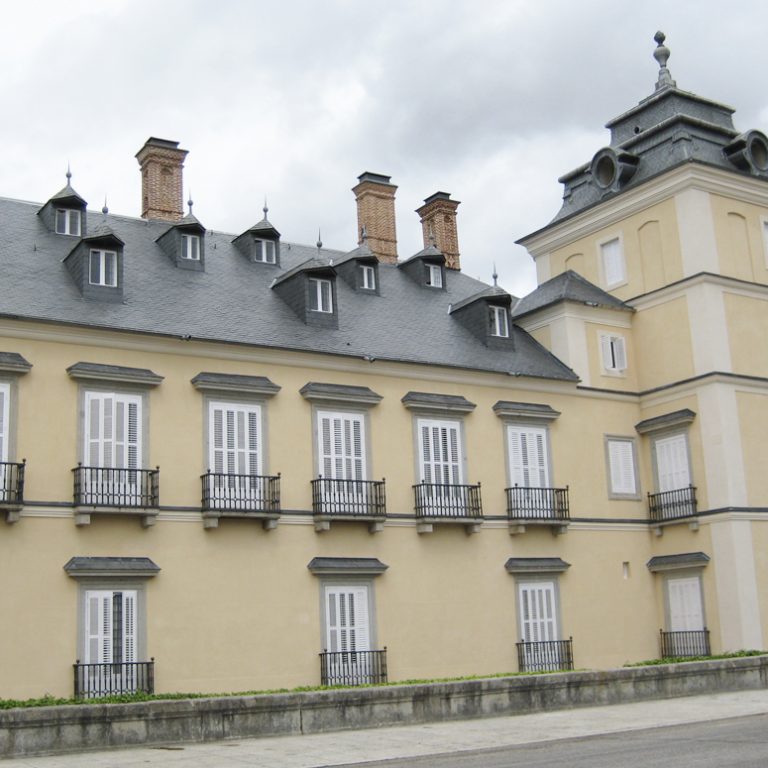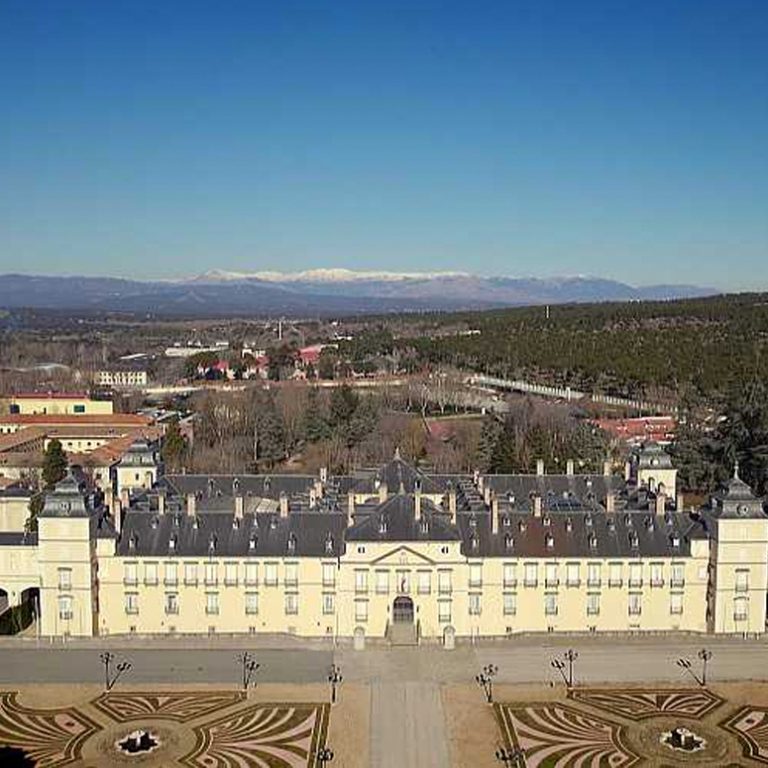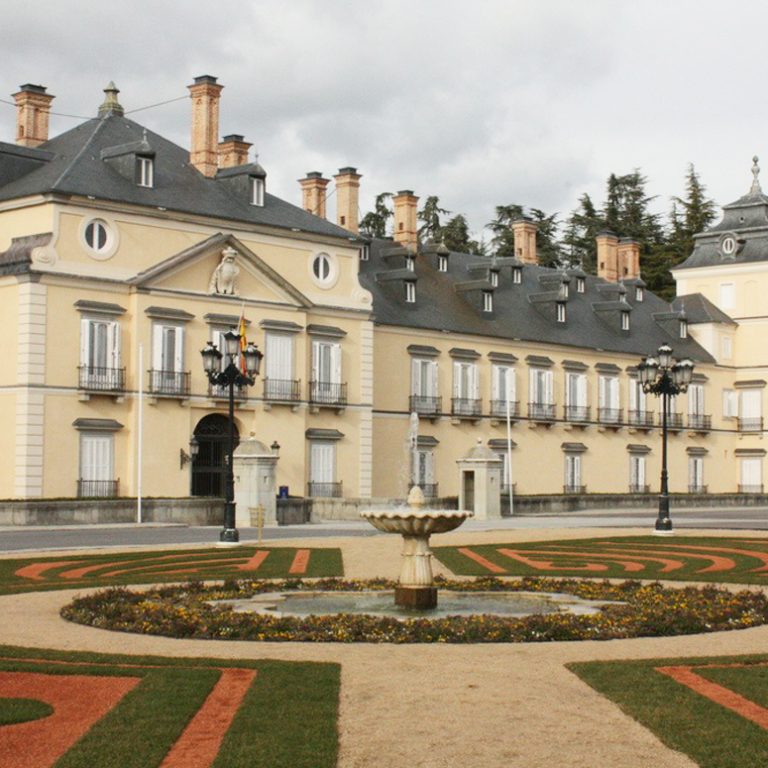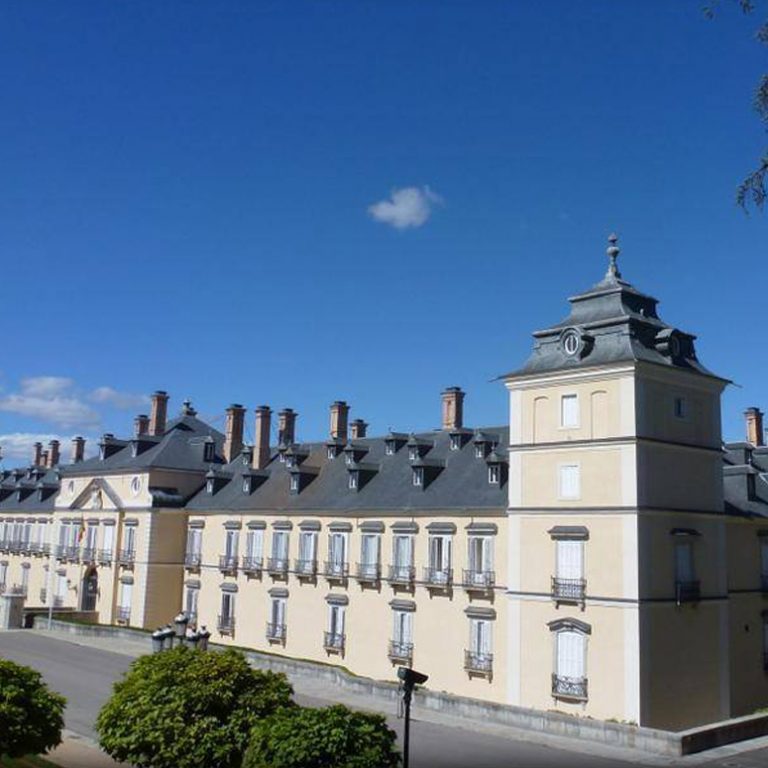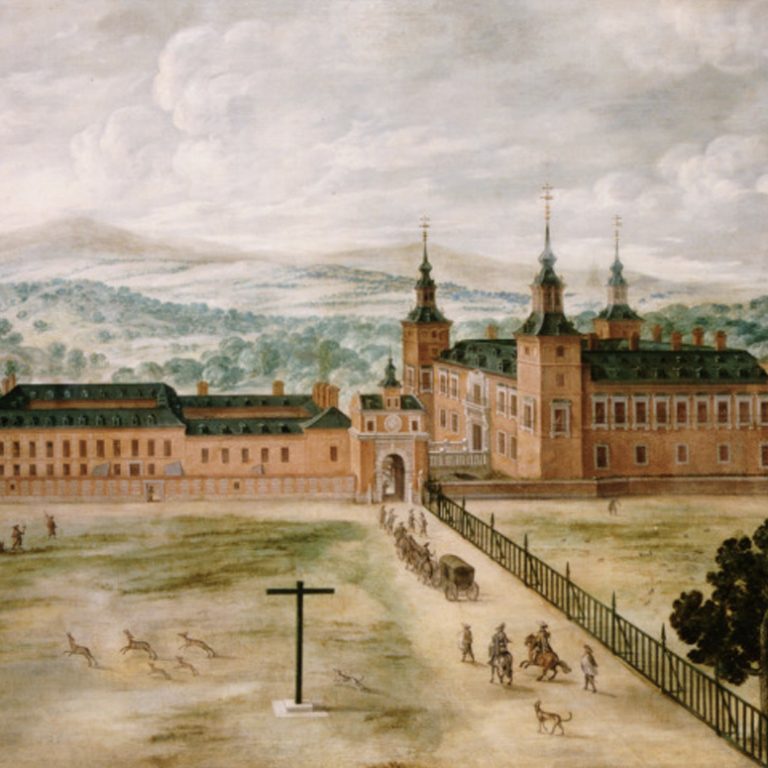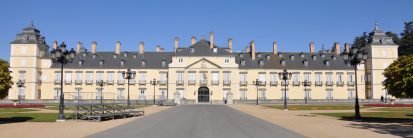
The Royal Palace of El Pardo is one of the residences of the Spanish royal family. Originally it was a Habsburg hunting lodge, later becoming the sovereign's main winter residence under the Bourbons. During Franco's dictatorship it was the official residence of Francisco Franco, and its main use today is to house foreign heads of state when they are on official visits to Spain.
The origins of this palace date back to 1405, when Enrique III of Castilla ordered the construction of a royal house on Monte de El Pardo, a place that the monarch frequented, given the wealth of his hunting. Enrique IV, for his part, built a small castle there.
Emperor Carlos I, under the impulse of the young Prince of Asturias, Felipe, determined the transformation of this castle into a palace. From 1544 work began according to a first project by Luis de Vega, also author of the Palace of Valsaín. From 1563, when Felipe II was already king, Juan Bautista de Toledo began to cover the building with a pitched slate roof, imitating the Flemish architecture that the sovereign loved so much.
The opening of the Bernardos quarries coincided with the renovation of a large part of the royal works, located in the vicinity of Madrid, which Felipe II would finally convert in 1561 into the capital of the monarchy. We can say that at the beginning there are three works that simultaneously receive the first batches of slate: the Palace of the Bosque of Segovia (Valsaín), the Palace of El Pardo and the Real Alcázar of Madrid with its annexed dependencies ( Reales Caballerizas-Armeria). The Phyllite of Bernardos, recently named a World Heritage Stone by the UISG, is an essential element of many emblematic works of Spanish architectural heritage and it is essential to protect it in order to carry out restoration actions in accordance with the recommendations that have been made in this sense at the international level (Charter of Athens and Charter of Venice).
In this logic, in our contemporary era, rehabilitations of the roof of the Palace have been carried out with Phyllite naturpiedra for roofing from Bernardos.
